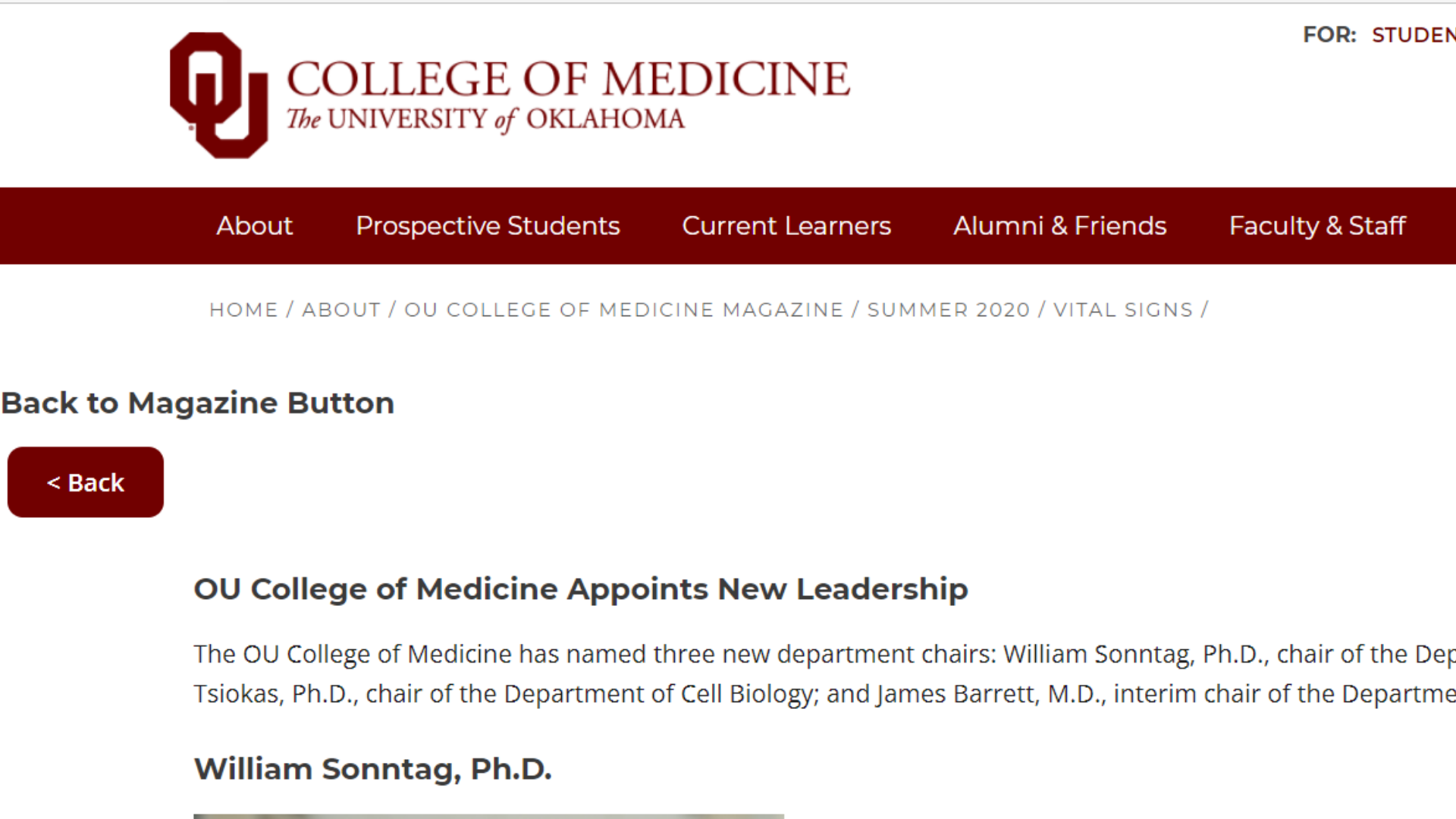There have been impressive advances in understanding the molecular and cellular mechanisms of aging, including the discovery of manipulations that delay aging and increase healthspan. Importantly, these interventions also reduce or prevent age-related diseases. These outcomes raise the possibility that multiple human diseases arise from a common cause ? aging. The premise of this CoBRE Phase 1 is that the mechanisms of aging and the mechanisms of age-related diseases share common cellular and molecular processes that underlie healthspan and lifespan. An important corollary to this concept is that pre-clinical and clinical research on age-related diseases must incorporate an understanding of the cellular/molecular changes that occur with age in order to adequately develop treatments for age-related diseases. Here, we propose a multidisciplinary, inter-departmental, and inter-institutional CoBRE program focused on Cellular and Molecular Geroscience. Geroscience is a new, interdisciplinary scientific field that addresses the cellular and molecular events that dramatically increase the risk for disease with age, create a ?permissive milieu? and, as a result, disease increases exponentially. Our program has exceptional institutional support. The program is highly innovative in that it combines mentoring of promising junior investigators (PJIs) by outstanding scientific experts who are currently studying mechanisms of aging and by faculty investigating age-related disease in a manner that will increase both the quantity and quality of on-going disease-related research in the context of the aging organism. These goals will be accomplished through the mentoring of PJIs, who have faculty appointments at OUHSC; recruiting senior investigators to the OUHSC campus; and developing the necessary infrastructure for support of the research program.
The specific aims for the program are: 1. Develop and expand institutional biomedical research in Geroscience through the mentoring of PJIs by highly experienced, dedicated senior investigators. 2. Enhance the infrastructure critical for expanding Geroscience research in Oklahoma. 3. Foster collegial and collaborative relationships between CoBRE investigators and other scientists. 4. Establish milestones and expectations that ensure the success of the program and its participants. The outcome will be a sustainable, interdisciplinary research structure on the OUHSC campus, which will produce a new generation of collaborative Geroscience-trained researchers and establish OUHSC as a leader in Geroscience.
CELLULAR AND MOLECULAR GEROSCIENCE CoBRE – William Sonntag (grantome.com)

